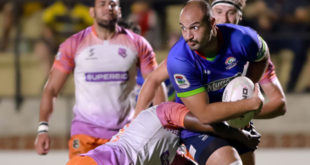World Rugby’s report of growth in Peru this past week was the latest in a series of positive features coming out of Latin America. A Public Relations exercise or not is besides the point as rugby is truly stronger than ever before and, in fact, significantly more so. The sport in Peru has expanded rapidly and extensively.
Then
Two decades ago, in 1996, Peruvian rugby was extremely niche. This was the case despite Peruvian rugby having a detailed history including participating in the second edition of the South American A Rugby Championship in 1958.
In 1997 representatives from the Lima clubs Universidad Católica, Universidad de Lima, Club de Rugby San Isidro and Old Markhamians Rugby Club established the national governing body, the Unión Peruana de Rugby (Peru Rugby Union) of which Néstor Corbetto was the first President.
In October of that year the Peru Rugby Union was formerly accepted as a member of the Confederación Sudamericana de Rugby (CONSUR – now Sudamérica Rugby) and on April 13 2000 the union became an official IRB (World Rugby) member. The union was rebranded in 2002, taking on the current name as the Federación Peruana de Rugby (FPR).
Now
By 2013 the situation had undergone little change. But from 2013-2016 the difference has been truly remarkable. Peruvian rugby has transformed itself to now have 35 clubs in the country. This growth having been from the country having just six rugby clubs and the sport featuring and four universities and a couple of schools.
The rapid, unprecedented explosion has caught the imagination of students too with there now being 22 universities with rugby, 12 of which are in Lima. This has meant that today there are 2,000 adult players involved in regular rugby competitions in the country.
The number is far from approaching that of southern neighbors Chile or of regional giants Argentina but it is, nonetheless, surprisingly larger than some in comparative terms. Indeed there are only 1,200 players playing rugby in Namibia, a country to have qualified for every Rugby World Cup in the professional era.
The growing participation and popularity of the sport also has important social values. This has seen rugby now being taught in five different Peruvian cities and being used as a social program to help underprivileged children.
Notwithstanding, the newfound growth has come after Peru has fallen in the Americas Rankings to be the bottom ranked South American country in the World Rankings. Of those ahead of Peru are Colombia and Venezuela, countries not involved in the South American Championship until much more recently.
Peru’s overall present ranking of 15th in the Americas may well be temporary. Such was the performance of Los Tumis in the 2015 South American B Championship that the gap between Venezuela and Peru is now minimal. Venezuela’s World Ranking of 39,77 points is only just enough to hold-off the Peruvians who have 39,51 points.
Catching-up to Venezuela is now within Peru’s possibilities but Colombia remain the top country in South American B terms. Colombia’s spectacular progress has put the country in a position to be seriously considered as a future member of the Americas’ second division.
Future
This has to be on the minds of the FPR. The work being done in the country through World Rugby’s Get Into Rugby program certainly implies that the opportunities are like none before. In 2015 the initiative introduced rugby to 29,000 Peruvian children throughout the country.
Former Los Tumis scrum half and captain Maser Madueño Posth is leading the charge. “In the near future, the FPR goal is to get rugby as part of the school curriculum, and to have a competitive national schools and a competitive university tournament. With this in place, our national teams will be naturally more competitive.”
Comments from World Rugby’s General Manager for Development, Morgan Buckley further suggest Peru could be an important part of an Americas second division. Buckley noted that the FPR has “managed to get the South American B Championship shown live on local television to an audience of 300,000.”
Television coverage is certainly a central component to progress. It has been central to Brazil getting into the Americas Rugby Championship over Paraguay, a country to have defeated the Tupis twice over the past two years. Brazil enters the upcoming Americas Six Nations competition ranked 7th in the Americas, below Paraguay but there are seven teams between Brazil and Peru.
A theoretical Americas Six Nations second division would have Paraguay and the next five based on rankings. 2016 has started with those five being Trinidad and Tobago, Colombia, Guyana, Mexico and the Cayman Islands. The rankings points difference from the Cayman Islands to Peru is minimal and Los Tumis certainly could rise.
In order to do so Peru simply needs international competition. Wins over Ecuador currently matter not towards rankings due to Ecuador not being a World Rugby member. More wins over Venezuela will see Peru move towards 12th while interaction with Rugby Americas North members should, in all likelihood, see Peru sustaining itself in the Americas second division in rankings terms.
Growth is making Peru a strategically important country for the future. The marketability together with increased popularity in Colombia and Mexico give the Americas populated countries to build a viable long-term international competition.
 Americas Rugby News Rugby news from across the Americas!
Americas Rugby News Rugby news from across the Americas!




